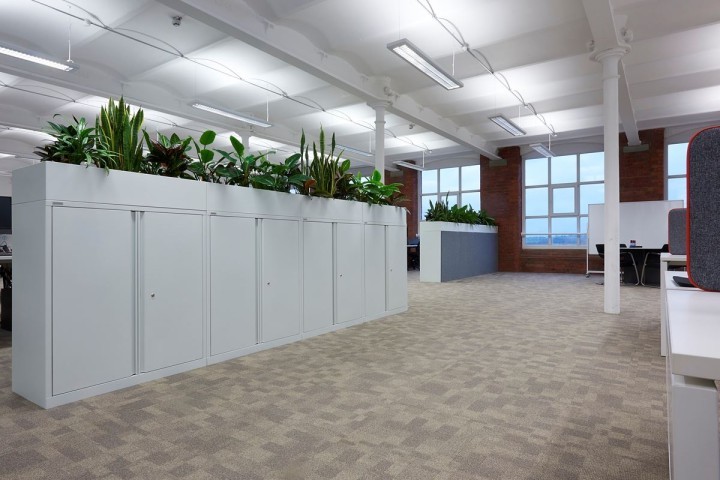Recent years have seen climate change and the importance of eco-friendly practices placed front and centre on the global stage. Just last month consulting firm, McKinsey, released a report underlining the need for companies to take immediate action. This has led to a demand for greener ways of working in the business world, in an attempt to minimise its negative impact on the environment.
Sustainable office design is key to success in this area, applying innovative methods to save energy, cut waste and boost the quality of life of all those involved. Here, Stewart Simon, managing director of Coulter Office Interiors, discusses how this can be achieved.
1. Energy-efficient design
One of the main goals of sustainable office design is to reduce energy consumption and waste, which involves gaining efficiencies across the areas of lighting, heating, water and air conditioning. This may include structural changes, such as adding insulation within external walls to preserve warmth or installing skylights to maximise natural daylight and ventilation – two things proven to positively impact the health and wellbeing of employees.
Businesses can also improve their ecological footprint inside the building. There are a number of green ways to incorporate artificial lighting throughout the workplace, ranging from dimming systems and occupancy sensors to reflective surfaces and glass walls. LEDs are widely considered the most eco-friendly lamps on the market, using 90% less energy than traditional incandescents and fluorescents. This also makes them incredibly cost efficient, with a typical payback period of around three years.
Perhaps predictably, nature is key to the sustainable workplace and can be used both internally and externally to make significant energy savings. Outside, trees can be planted to shade the building from the summer heat, reducing the need for air conditioning, whilst bringing plants inside can improve air quality – they happen to look good too!
2. Sustainable materials
The sustainable workplace incorporates eco-friendly materials, with recycled furniture, non-toxic paints and recyclable equipment at the top of the list. More businesses are also opting to source materials locally, saving money and energy on transportation. These low-emission options reduce the environmental impact right across the supply chain, spanning from the manufacturing process to eventual landfill.
There are a number of innovative and aesthetically pleasing methods to incorporate sustainable materials throughout the workplace. One of the most popular being upcycling. Otherwise known as creative reuse, this involves transforming waste or unwanted objects into a product of higher quality and environmental value. The end result is often a bespoke piece of furniture, which adds both character and a personal touch to the office space.
3. Caring culture
For sustainable design to be effective, the workforce needs to believe in the eco-friendly practices it promotes. This begins with the organisational culture of the company, with many promoting recycling programmes, car sharing and cycle to work schemes as a way to engage employees with the cause. In some cases, it’s as simple as setting out rules around shutting down computers at the end of the day or switching off lights when a room is unoccupied.
The job of the designer is to make this culture easier to implement and maintain. This may involve installing a cycle rack on the premises or creating designated recycling stations. It’s also important to note that sustainable design isn’t limited to preserving natural resources; it is also concerned with enhancing the wellbeing of employees. Therefore, features that maximise the comfort and happiness of the workforce, such as ergonomic seating and noise-control measures, are also key considerations.
The future is now
At a time where public concern over climate change is at an all time high, sustainable office design has never been so important. Done effectively, it promises a whole host of benefits to the environment and the workforce, enhancing wellbeing and providing a collective sense of purpose. Organisations that take their ecological footprint seriously are also more likely to be viewed favourably by customers and clients. All of this can be achieved without compromising on aesthetics, with a ride range of options that are as good looking, as they are responsible.
If you would like to find out how to transform your office into a sustainable workplace, contact Coulter Office Interiors for a free assessment today on 01772 702555.
Enjoyed this? Read more from Coulter Office Interiors






















